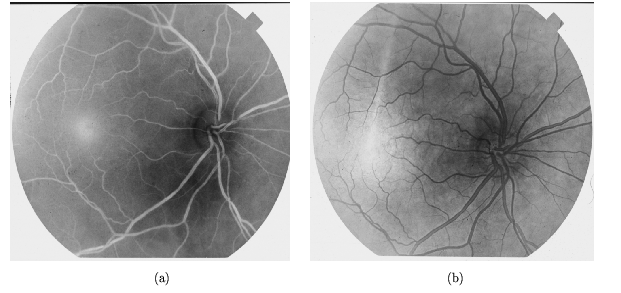 |
There have been many studies on the detection of blood vessels in medical images in general but only a small number are related to retinal blood vessels in particular. Most of the work on segmentation of retinal images can be categorised into two approaches: those based on line or edge detectors with boundary tracing [4,5] and those based on matched filters, either 1-D profile matching with vessel tracking [6,7,8,9] or 2-D matched filters [10,11,12].
We have applied some of these methods but because of the large regional variations in intensity inherent in these images and the very low contrast between vessels and the background, particularly in the red-free photographs, the results were disappointing. Techniques based on line or edge detectors lacked robustness in defining blood vessels without fragmentation and techniques based on matched filters were difficult to adapt to the variations of widths and orientation of blood vessels. Furthermore all of these methods are developed to work either on red-free or fluorescein images but not on both.
In this paper we present a method based on multiscale analysis from which we obtain retinal blood vessel width approximation, size and orientation using gradient magnitude and maximum principal curvature of the Hessian tensor, two geometrical features based upon the first and the second spatial derivatives of the intensity considered along the scales that give information about the topology of the image at different scales. We then use a multiple pass region growing procedure which progressively segments the blood vessels using the feature information together with spatial information about the 8-neighbouring pixels, obtaining in this way a segmented binary image. The algorithm works equally well with both red-free fundus images and fluorescein angiographs.
Next: The Segmentation Method Up: Retinal Blood Vessel Segmentation Previous: Retinal Blood Vessel Segmentation